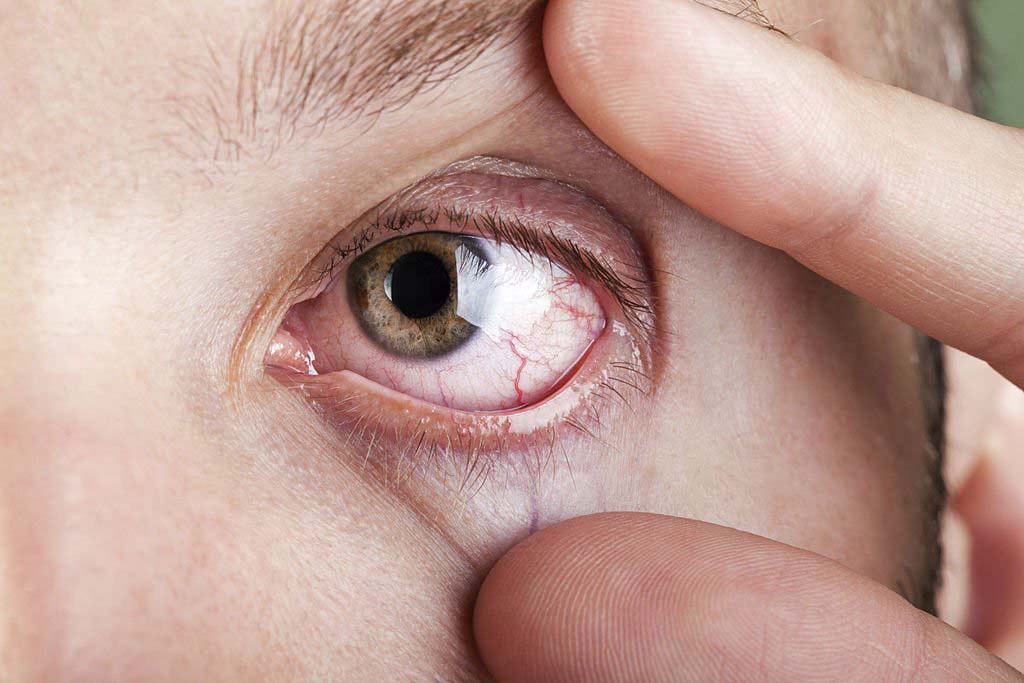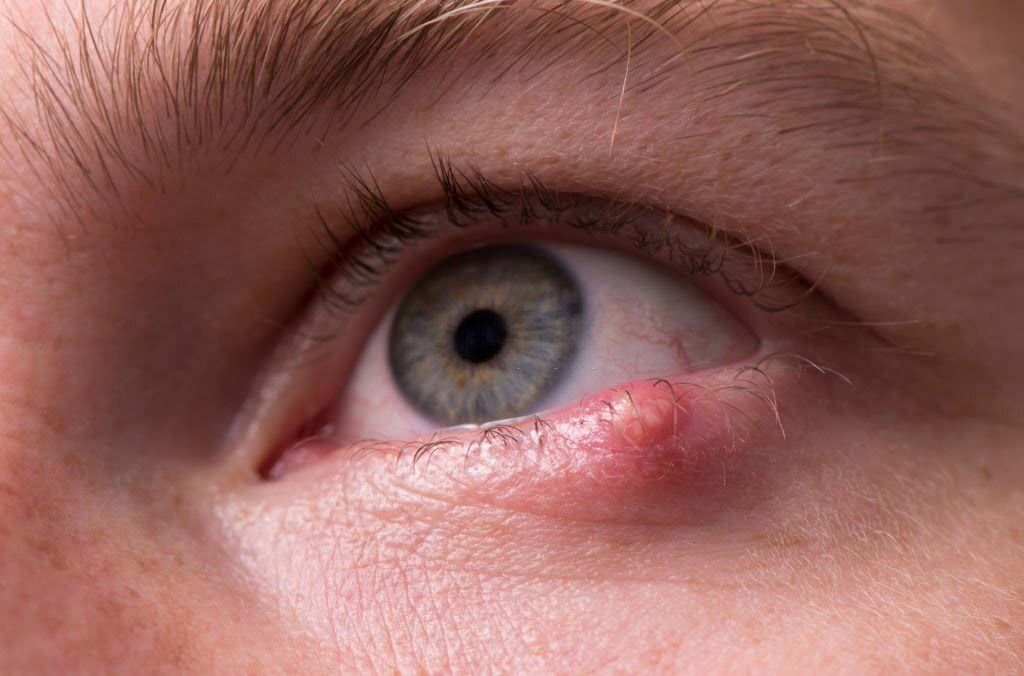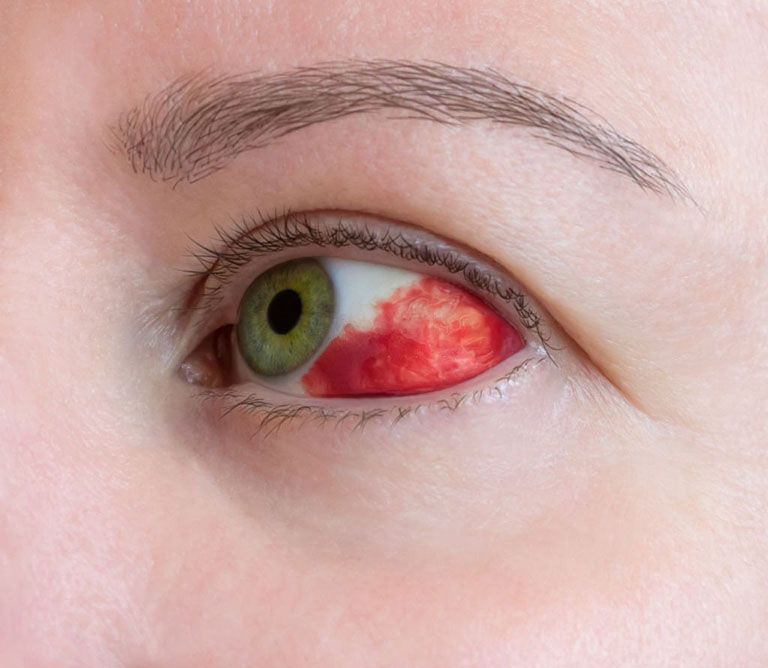This article is reviewed, corrected, and approved by: Dr. Joshua Collins M.D. | MRCP। FRCP
Conjunctivitis, commonly known as pink eye or red eye, is a common eye condition that causes inflammation or infection of the conjunctiva. However, there are several other eye conditions that can be misdiagnosed as pink eye due to similar symptoms.
It is essential for someone to understand the difference between pink eye and other eye diseases to ensure accurate diagnosis and appropriate management. By understanding the distinct characteristics of each condition, individuals and healthcare professionals can make rational decisions regarding treatment and care.
This article aims to shed light on what is commonly misdiagnosed as pink eye. Also, information on various eye diseases, including pink eye syndrome, highlights their symptoms, causes, and available treatment options.
1. Allergic Conjunctivitis

Allergies from things like pollen, dust mites, pet dander, or medicine can cause allergic conjunctivitis. This happens when the immune system reacts to something in the eyes, causing redness and irritation.
Symptoms of Allergic Conjunctivitis
- Redness
- Itching
- Watery discharge
- Burning or stinging sensation
- Allergic Conjunctivitis affects both eyes
Usually accompanied by other allergic symptoms
- Sneezing
- Nasal congestion
- Itchy throat
Management involves
- Identifying allergens
- Avoiding triggers for the reaction
Over-the-counter antihistamine eye drops or artificial tears can help relieve the symptoms. In more severe cases, prescription medications like antihistamines or corticosteroids may be necessary.
2. Dry Eye Syndrome

This eye condition occurs when there is insufficient production of tears or when tears evaporate too quickly, causing discomfort and irritation due to inadequate lubrication of the eyes.
As we age, hormones change, medications are taken, screen time is increased, and environmental factors contribute to Dry Eye Syndrome. Individuals with autoimmune disorders or who have undergone certain eye surgeries may also be at higher risk.
Dry Eye Syndrome can mimic Pink Eye symptoms, leading to misdiagnosis. Symptoms include redness, itching, blurred vision, light sensitivity, fatigue, dry or gritty sensation in the eyes. They worsen in low-humidity environments, like air-conditioned rooms.
Dry Eye Syndrome symptoms
- Redness
- Itching
- blurred vision
- Light sensitivity
- Fatigue in the eyes
- Dry or gritty sensation
- Symptoms worsen throughout the day or in low-humidity environments
Factors Contributing to Dry Eye Syndrome
- Aging
- Hormonal changes
- Medications
- Increased screen time
- Environmental factors
- Autoimmune disorders
- Certain eye surgeries
Treatment focuses on
- Improving tear production and retention
- Managing symptoms
Treatment options
- Artificial tear drops or ointments
- Moisture goggles
- Good eyelid hygiene
Lifestyle changes
- Regular breaks from screens
- Using a humidifier
- Adhering to the recommended proper eye care for you.
3. Bacterial or Viral Infections

Viral and bacterial infections in the eye are common conditions that can be mistaken for Pink Eye due to similar symptoms. However, proper diagnosis is crucial as treatment approaches differ significantly.
Bacterial Conjunctivitis, caused by bacteria like Staphylococcus or Streptococcus, typically results in redness, itching, and a sticky yellow or even deep-colored substance discharge from the eyes. Viral Conjunctivitis, on the other hand, is caused by viruses, often associated with the common cold or upper respiratory infections.
Bacterial Conjunctivitis
- Redness, itching, sticky yellow or green discharge from the eyes
- Can affect one or both eyes
- Highly contagious
- Antibiotic eye drops or ointments prescribed for treatment
Viral Conjunctivitis
- Redness, watery discharge, gritty sensation in the eyes
- Often associated with common cold or respiratory infections
- Usually resolves within a week or two
- Severe cases may require antibiotic eye drops
- Identifying the cause may require professional assessment and lab tests
Prevention measures
- Regular handwashing
- Avoid touching the eyes
- Refrain from sharing towels, pillows, or makeup.
4. Subconjunctival Hemorrhage

Blood is present under the conjunctiva in this condition, known as subconjunctival hemorrhage. Because of the redness it shows, it is often confused with Pink Eye. Unlike Pink Eye, Subconjunctival Hemorrhage is not caused by infection or inflammation.
Instead, it occurs when small blood vessels on the surface of the eye rupture, leading to the leakage of blood. This can be triggered by minor trauma, excessive coughing or sneezing, rubbing the eyes forcefully, or even high blood pressure.
Causes of Subconjunctival Hemorrhage
- Not caused by infection or inflammation.
- Results from rupture of small blood vessels on the eye surface
- Triggers: minor trauma, excessive coughing or sneezing, forceful eye rubbing, high blood pressure.
Primary symptom
- Bright red patch on the white part of the eye
- No pain, discharge, or change in vision associated with Subconjunctival Hemorrhage
- Blood is naturally reabsorbed by the body over time, and redness fades
- Subconjunctival Hemorrhage is not contagious and doesn't require specific treatment
- Generally harmless and resolves within 1-2 weeks
Treatment Option
- Need to consult professional medical advice for accurate diagnosis and treatment of Subconjunctival Hemorrhage or Pink Eye.
Pink eye vs Stye vs Allergies
Here are key differences between three common conditions i.e. stye vs pink eye vs allergies:
Symptoms of Common Eye Disease
- Allergies: Red, itchy, watery eyes; may also have a runny nose, sneezing, and coughing
- Styes: Red, swollen bump on the eyelid; may be painful
- Iritis: Redness, pain, and decreased vision in one or both eyes
- Keratitis: Redness, pain, and blurry vision.
- Blepharitis: Red, flaky, or crusty eyelids; may also have dry eyes.
Treatment for each condition
- Allergies: Antihistamines, eye drops, or allergy shots.
- Styes: Warm compresses, antibiotic ointment, or antibiotics (oral).
- Iritis: Pain relievers, anti-inflammatory eye drops, or oral steroids.
- Keratitis: Antibiotic eye drops or ointment, pain relievers, and warm compresses
- Blepharitis: Warm compresses, lid hygiene, and antibiotic eye drops.
Best Eye Drops For Pink Eye
You can find some pink eye relief drops on the market. Before choosing any of them, it would be best for you to know how they work and did they interact with your eyes or not. Some pink eye relief drops are-
- Artificial tears: These lubricating eye drops provide moisture and alleviate dryness and irritation associated with pink eye. They are safe to use for both viral and bacterial infections. Popular brands include Refresh, Systane, and Blink.
- Antihistamine eye drops: Antihistamine eye drops block histamine and alleviates symptoms of allergic conjunctivitides, like itching and redness. Alaway, Pataday, and Zaditor are common OTC eyedrop brands (best over the counter medicine for pink eye).
- Decongestant eye drops: Decongestant eye drops like Visine, Clear Eyes, and Naphcon-A can reduce redness and irritation in pink eye by shrinking blood vessels. But don't use them for too long, or they can dry out your eyes.
Watch and Learn Fascinating Details About Conjunctivitis (Pink Eye)
The Bottom Line
Eye conditions commonly misdiagnosed as pink eye include Allergic Conjunctivitis, Dry Eye Syndrome, Bacterial or Viral Infections, and Subconjunctival Hemorrhage. It is important to understand the distinctions between these conditions to ensure accurate diagnosis and appropriate treatment.
I have gathered a complete list of eye conditions to help you know the distinctions between each illness. My aim was to give you useful information that can help lower the chance of having any eye problems in the future.


